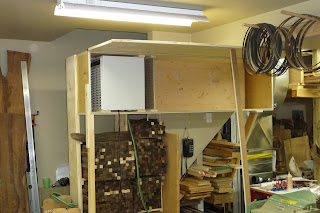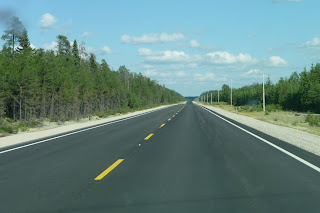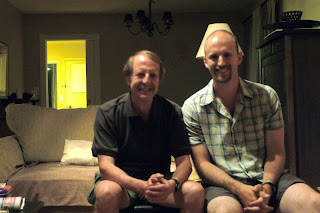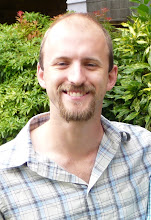
Konrad, happy even when he has to wear a shirt. Well, I'd be smiling too if I was 36 and looked this good!
Although Kon and I met last summer at Westonbirt's 'Festival of the Tree', I was a little unsure of how welcome I would be in his home, especially for the best part of 6 days... I think that neither of us knew quite what to expect, which made all of us a little nervous, despite also feeling that we were all reading from the same song sheet. Our fears were, I think, quickly allayed, especially once I had met Jill (aka The Lady Sauer), Riley (elder son) and Lucas (younger son, not named after George - yeah right!) and gotten thoroughly soaked running around with the kids at the water park that first evening.
Both Kon and Jill look sickeningly young and healthy (not that I'm jealous) and have bundles of energy (as do their boys). Konrad beamed that he had recently been asked for I.D. when buying alcohol, and I could well believe it. I made a noise like Mutley from Wacky Races in response. I have to say I was relieved by two things: how easy-going they both are, and how well we got on.
My days were spent in the privilege of watching Konrad at work, expertly making his beautiful infill planes. As I saw how he puts these stunning tools together, I realised that this was a master craftsman. He crafts his planes almost entirely by hand, using simple tools: rasps, hammers, files and sandpaper.

"One man may need many files" (Ancient Chinese proverb)
Much of the time I was thinking, "What!? You're going to do that how?? File the mouth of the plane - with a file?? Oh my.". Konrad embodies what David Pye called the 'workmanship of risk', his process is a refined, quirkily personal on at the centre of which are his hands, eyes and skill. If he slips, or makes a mistake, his work can be ruined. To me, this is what makes him unique. He is, for my money, the best plane maker in the world, and in part this is because every plane he makes is unique. You can't buy two Sauer and Steiner planes that are the same, because no-one can hand make two identical items: but to focus on repeatability is to miss the point. Konrad's planes are the best because he doesn't try to make them all precisely the same - the lever cap 32.5 mm from the sole, etc. - his planes are not measured to a scale, they are balanced to themselves. So it is that they work in harmony with their nature.

One of Konrad's beauties.
Don't get me wrong, Konrad's planes are made to an exacting standard of bewildering quality, but it is a standard and quality on a human scale, not the microns and nanoseconds of machines.
When I wasn't watching Konrad at work, I was oggling his timber stack... beautiful, old tropicals for the most part - the sort of thing us woodworkers go doolally over! He's got this board of Brazilian rosewood (on the right of the pic) that's about 3 inches thick, 10ft long and between 2 and 3 ft wide that is ALL figured. Konrad said that he doesn't have the heart to cut it up, and is trying to convince Jill that they should put it over the mantlepiece. I know I'd be in the same position, and my arguments would be equally fruitless!

Mmm... tasty.
I did manage to make myself of some use while I was there too, which was gratifying. I had said to Kon that if there was a project that he had in mind and needed some help with, I'd be very keen to help. So on Saturday we built a dehumidifying kiln! I must admit that I took some convincing that Konrad's ebony needed to be taken down from 9% to 6% M.C., but let's face it, he's the expert! We headed off to the local store and found a dehumidifier (made in Canada too - I didn't realise that we still make things in the Western world?!) and then Kon dragged me along to the dreaded Home Depot (aka the Big Orange Box). It's like B&Q on steroids, for those Brits out there. They even have a similar tag line - instead of, "You can do it when you B&Q it" it's, "You can do it. We can help!". Catchy, eh? Still, they had everything we needed and we hightailed it out of there while we still had the will to live. Two hours later and hey presto! the kiln was done!

Ain't it a beaut? (Based on Ejler Hjorn-Westh's design in Woodwork no.99)
So, the long and the short of it is that I had a great time with a great family, and how could I not have? I learned a lot about plane making, furniture making, running a successful business and being human. My sincere thanks to Kon, Jill and the boys for being wonderful hosts and kind friends! Até a vista amigos!















































